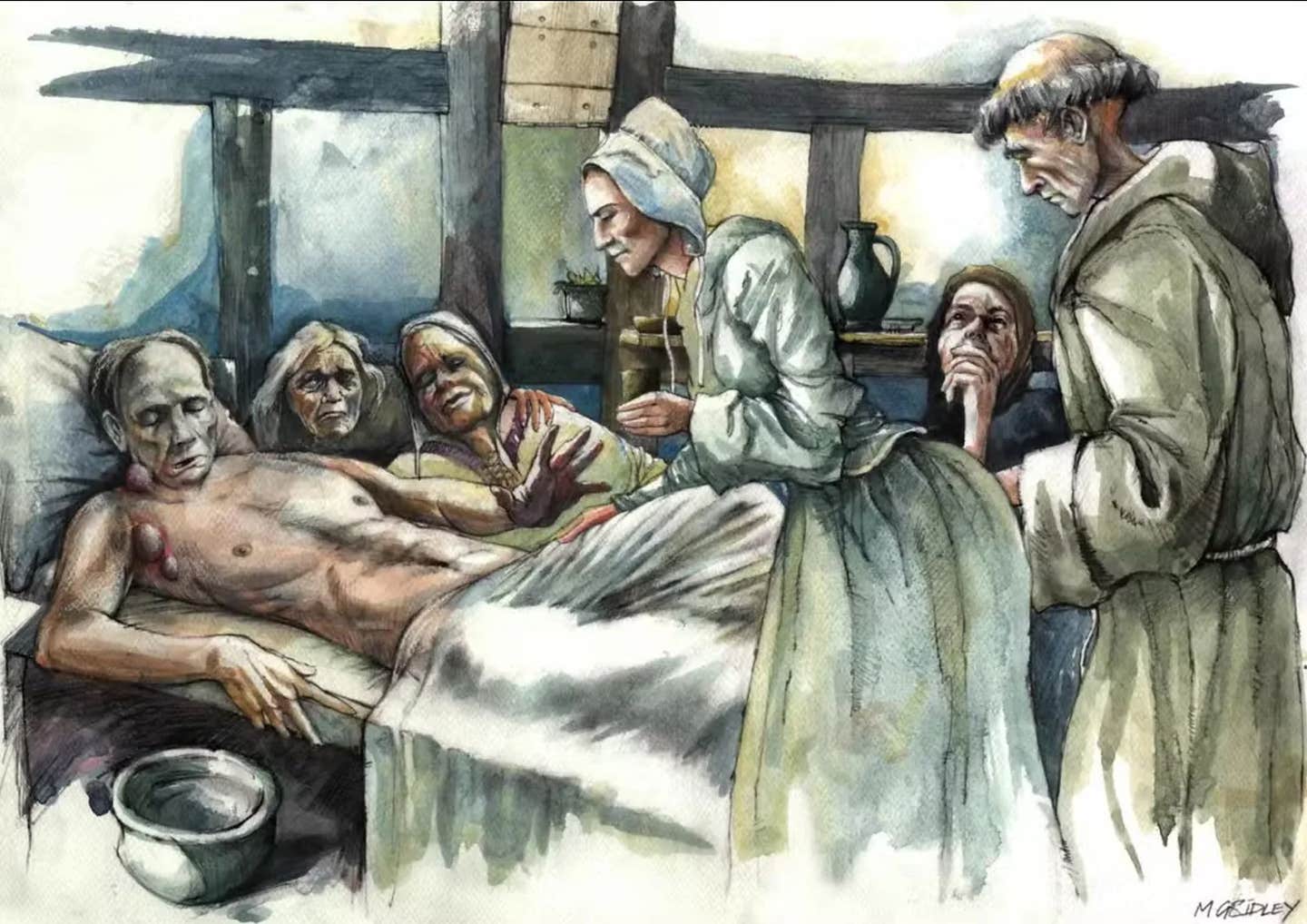Scientists finally learned the cause of the Black Death
The Black Death first arrived in the Mediterranean via trade ships carrying goods from the territories of the Golden Horde in the Black Sea.

Reconstruction of plague victim from All Saints, Cambridge. (CREDIT: Mark Gridley)
In 1347, the Black Death first arrived in the Mediterranean via trade ships carrying goods from the territories of the Golden Horde in the Black Sea. This deadly outbreak rapidly spread across Europe, the Middle East, and northern Africa, decimating up to 60 percent of the population.
This devastating wave marked the beginning of a 500-year-long pandemic, known as the Second Plague Pandemic, which endured until the early 19th century.
The origins of the Second Plague Pandemic have been widely debated for years. While a popular theory suggests it began in East Asia, particularly China, the only archaeological evidence currently available points to Central Asia, near Lake Issyk Kul, in present-day Kyrgyzstan.
According to the findings, a local trading community was ravaged by an epidemic during the years 1338 and 1339. Nearly 140 years ago, excavations uncovered tombstones indicating that people died during that time due to an unknown epidemic or "pestilence."
Since their initial discovery, scholars have debated the significance of the tombstones, which are inscribed in Syriac language, in relation to the Black Death in Europe.
An international team of researchers conducted an analysis of ancient DNA from human remains and historical and archaeological data from two sites that contained "pestilence" inscriptions. The aim of the study was to determine the cause of the epidemic that was mentioned in the inscriptions.
Related Stories
The initial results of the study were promising. The team was able to identify DNA from the plague bacterium, Yersinia pestis, in individuals whose tombstones were inscribed with the year 1338. Phil Slavin, a senior author of the study and historian at the University of Sterling, UK, stated that the study finally provided evidence that the epidemic mentioned on the tombstones was indeed caused by the plague.
Researchers found the Black Death’s source strain
Researchers have previously linked the initiation of the Black Death with a significant increase in the number of plague strains, referred to as the Big Bang event of plague diversity. However, the exact date of this occurrence had remained imprecise and was estimated to have taken place sometime between the 10th and 14th centuries. Could this event be the source of the Black Death?
By reconstructing the entire genomes of ancient plague strains from sites in Kyrgyzstan, the team investigated their possible association with the Big Bang event. Their findings showed that the ancient strains from Kyrgyzstan were positioned precisely at the node of this extensive diversification event.
"We have identified the Black Death's source strain and even know its exact date, which is 1338," says Maria Spyrou, lead author and researcher at the University of Tübingen.
The Black Death's origin has been linked to the Big Bang event of plague diversity, which previously could not be accurately dated. However, through the reconstruction of ancient plague genomes from Kyrgyzstan, the team identified the precise source strain of the Black Death and its date, which was in the year 1338.
The origin of the strain that caused the Black Death remains a mystery. Scientists are unsure whether it evolved locally or spread to the region from another location.
Plague is not exclusive to humans, as the bacterium survives in wild rodent populations around the world, in areas known as plague reservoirs. Therefore, the ancient Central Asian strain responsible for the 1338-1339 epidemic near Lake Issyk Kul likely originated from one of these reservoirs.
According to Johannes Krause, director at the Max Planck Institute for Evolutionary Anthropology and senior author of the study, modern strains closely related to the ancient strain can be found in plague reservoirs around the Tian Shan mountains. This finding indicates that the ancestor of the Black Death likely originated in Central Asia, in close proximity to where the ancient strain was discovered.
With unparalleled precision, the research illustrates how scrutinizing well-defined archaeological contexts and fostering close partnerships among historians, archaeologists, and geneticists can solve major mysteries in our history, such as the origins of the notorious Black Death.
Note: Materials provided above by The Brighter Side of News. Content may be edited for style and length.
Like these kind of feel good stories? Get The Brighter Side of News' newsletter.
Joseph Shavit
Head Science News Writer | Communicating Innovation & Discovery
Based in Los Angeles, Joseph Shavit is an accomplished science journalist, head science news writer and co-founder at The Brighter Side of News, where he translates cutting-edge discoveries into compelling stories for a broad audience. With a strong background spanning science, business, product management, media leadership, and entrepreneurship, Joseph brings a unique perspective to science communication. His expertise allows him to uncover the intersection of technological advancements and market potential, shedding light on how groundbreaking research evolves into transformative products and industries.



